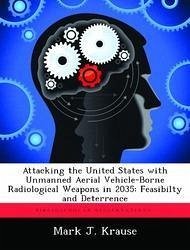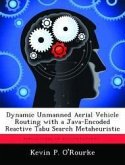June 2035: the sky was clear and the ocean was calm. It was a perfect night to attack the United States. A fishing trawler rested peacefully on the smooth Atlantic Ocean about 150 miles due east of Washington DC. The trawler was not alone; a recreational craft was 50 yards off the trawler's starboard side. The trawler was devoid of a crew, which had left for the luxury craft about 15 minutes before. On board the trawler were two metal frames, one fore and one aft, each supporting a twin-boom unmanned aerial vehicle (UAV) with a 15 foot wingspan. The unmanned aerial vehicles were pre-programmed to fly to downtown Washington, DC whereupon a payload of radioactive material would be discharged via an explosion. Three more trawlers waited; one about 200 miles south of this one, one off the Gulf Coast and one off the Pacific Coast, each with similar unmanned aerial vehicles and payloads. All were ready to launch at the exact same time. At the planned time, a switch was toggled and the unmanned aerial vehicles rocketed from their launchers. The recreational boat pulled away. This was no suicide mission, and the crews would be available again if they could avoid capture. The US is vulnerable to such an attack today. Delivering a radiological payload by unmanned aerial vehicle avoids smuggling the materials into the US, or relying on suicide tactics, saving experienced personnel to attack again at a later date. In 2035, unmanned aerial vehicles are technologically advanced, reliable and plentiful. These unmanned aerial vehicles are available on the open market, and are not controlled because of their small size, limited range, and limited payload. The radioactive material is not controlled adequately, and is readily available. A large area antiaircraft defense probably is not available because of the expense. Antiaircraft point defenses are impractical because there are too many high value targets, such as large population centers and special-purpose facilities.







